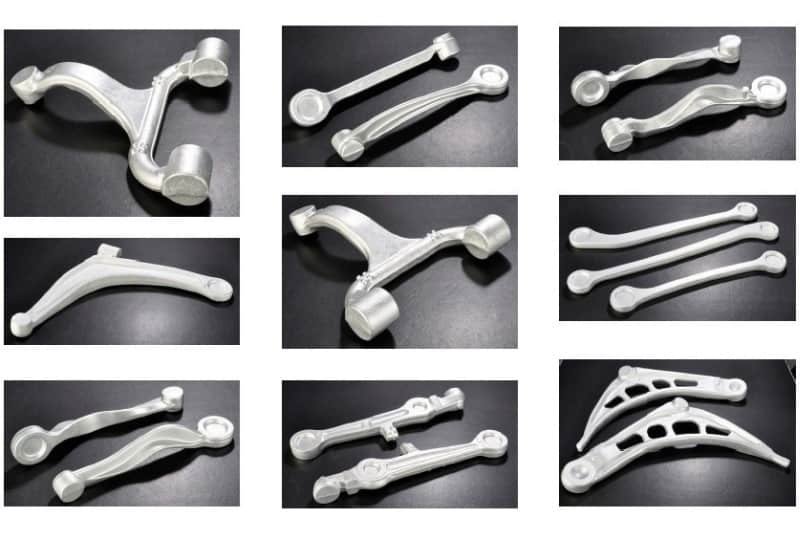Concealed Door Hinges
Discover modern design and functionality with concealed door hinges, enhancing both seamless door movements and aesthetic appeal in your living spaces. Positioned discreetly within doors and frames, these hidden gems are a hallmark of contemporary interiors. This article explores their advantages, types, installation, and future trends, providing insights into the significant impact concealed door hinges can have on both style and functionality. Join us in exploring the world where innovation meets sleek design.
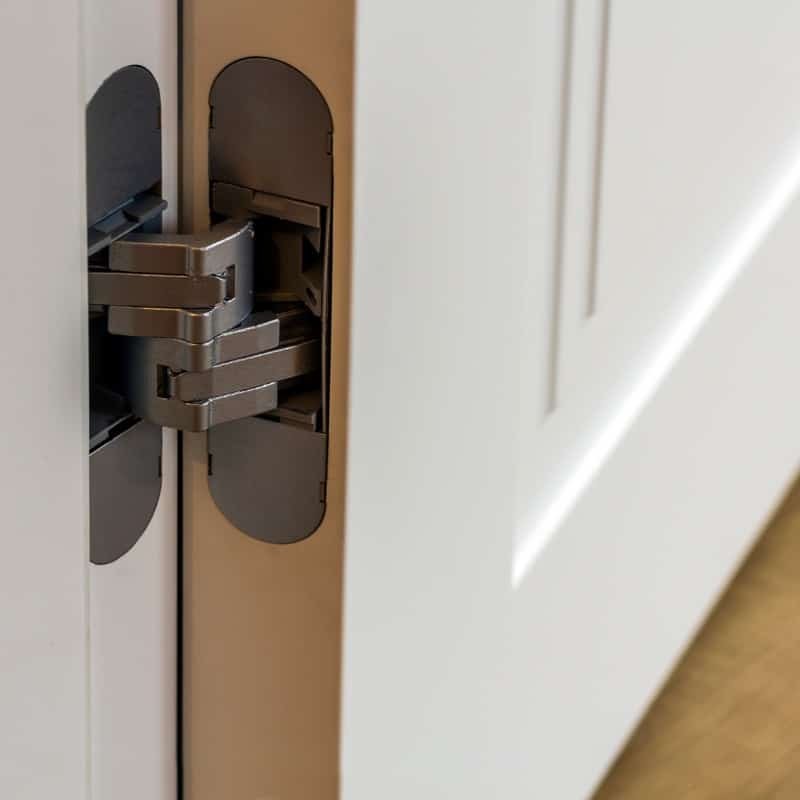
[toc]
Introduction to Concealed Door Hinges
Designed to stay hidden from view when doors are closed, concealed door hinges, also referred to as hidden hinges, showcase a discreet and seamless aesthetic. Positioned within the door and frame, they offer a sleek and unobtrusive look, gaining popularity in contemporary interiors that prioritize a modern aesthetic. They come in various designs, some with soft-closing features, contributing to a clean and modern aesthetic by keeping the hardware hidden when not in use.
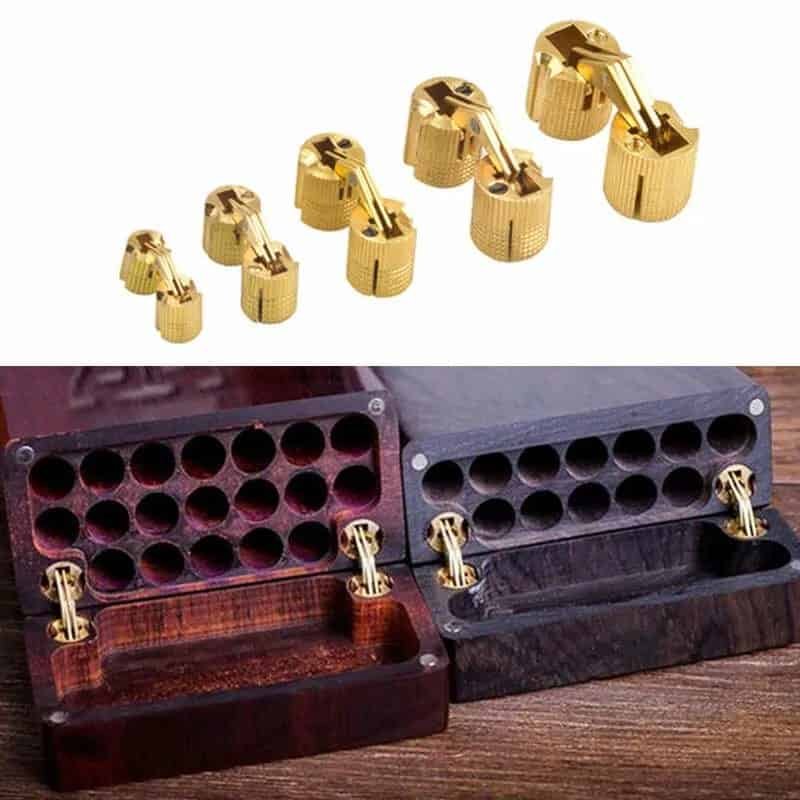
Advantages of Concealed Door Hinges
Enhanced Aesthetics
Concealed door hinges captivate by their capacity to elevate the visual appeal of a door, adding a distinct aesthetic charm. Without visible hardware, doors appear sleek, clean, and more visually appealing.
Improved Security
Concealed hinges add an extra layer of security by eliminating external access points. This makes it challenging for intruders to tamper with the hinges, reinforcing the door’s integrity.
Easy Installation
Unlike traditional hinges that may require elaborate installation processes, concealed door hinges are relatively easy to install. Their design often allows for quick and straightforward attachment.
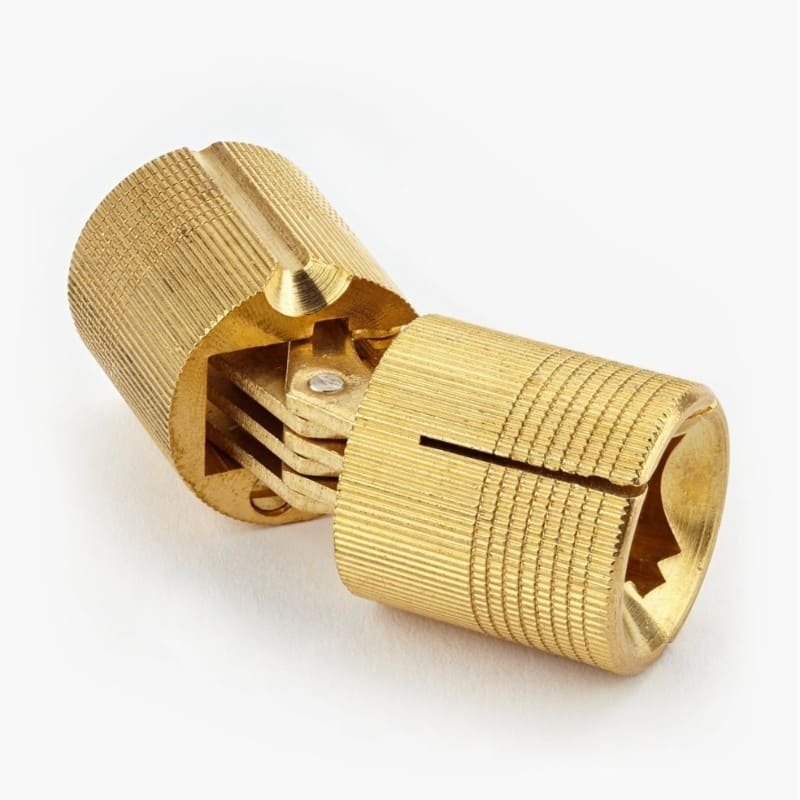
Applications of Concealed Door Hinges
Concealed door hinges are commonly used in high-end cabinetry, including kitchen and bathroom cabinets, where the goal is to maintain a clean and modern look without visible hardware. Concealed hinges are also popular in contemporary furniture design, providing a seamless and uncluttered appearance to dressers, wardrobes, and other pieces. In contemporary residences and workplaces, concealed hinges play a role in achieving a polished design by concealing hardware when doors are shut. Additionally, these hinges are employed in specialized environments like art galleries and upscale commercial spaces, where a discreet and elegant finish is essential.
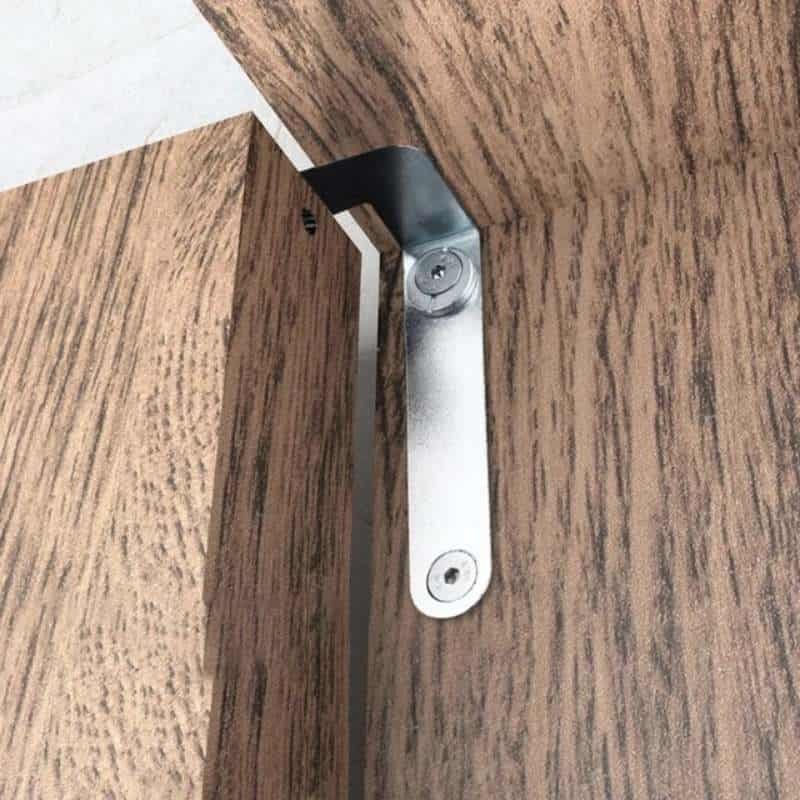
Types of Concealed Door Hinges
An assortment of concealed door hinge types is available to meet diverse needs and applications. One common type is the barrel hinge, which consists of interconnecting cylindrical components, allowing for smooth door movement. Another type is the pivot hinge, designed for doors that need to pivot rather than swing open. Butt hinges are also used as concealed options, providing a discreet look when the door is closed. European-style hinges are popular in cabinetry, offering easy adjustability. Additionally, Soss hinges are specialty concealed hinges designed for flush installations, allowing the door to blend seamlessly with the surrounding frame.
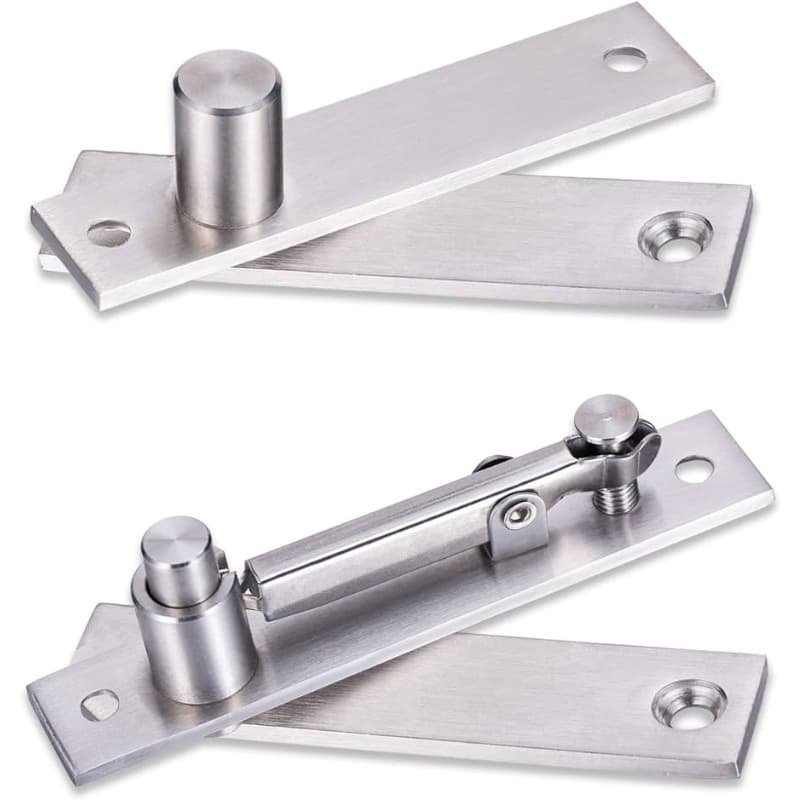
How the Hinge Concealed
The concealed hinge mechanism is installed within the door and frame, concealed in specially cut mortises or recesses. The hinge consists of two interconnecting plates—one attached to the door and the other to the frame—that pivot around a pin or knuckle. When the door is closed, these plates come together, hiding the hinge from sight. This design allows the door to swing open and close while maintaining a flush and unbroken surface when shut.
Materials and Finishes for Concealed Door Hinges
Concealed door hinges are made from materials like stainless steel, aluminum, brass, and zinc alloys, chosen for durability and corrosion resistance based on factors like door weight and environment. Finishes, such as polished, powder-coated, plating, anodizing, and color customization, vary to suit diverse design preferences. Some hinges include self-lubricating features for smooth operation. This material and finish flexibility enables seamless integration into various architectural and interior design styles.
Installation Process
Installing concealed door hinges involves meticulous steps. Begin by preparing the door and frame, marking hinge locations, and chiseling mortises for hinge placement. Insert the hinges, ensuring they align flush with the door edge, and secure them with provided screws. Conduct adjustments for proper alignment and smooth operation, utilizing any features like soft-closing mechanisms if present. Finalize the installation by checking the door’s movement and appearance, making necessary adjustments, and installing additional hardware as needed. This process results in a seamlessly integrated concealed hinge, providing both functional benefits and a discreet aesthetic.
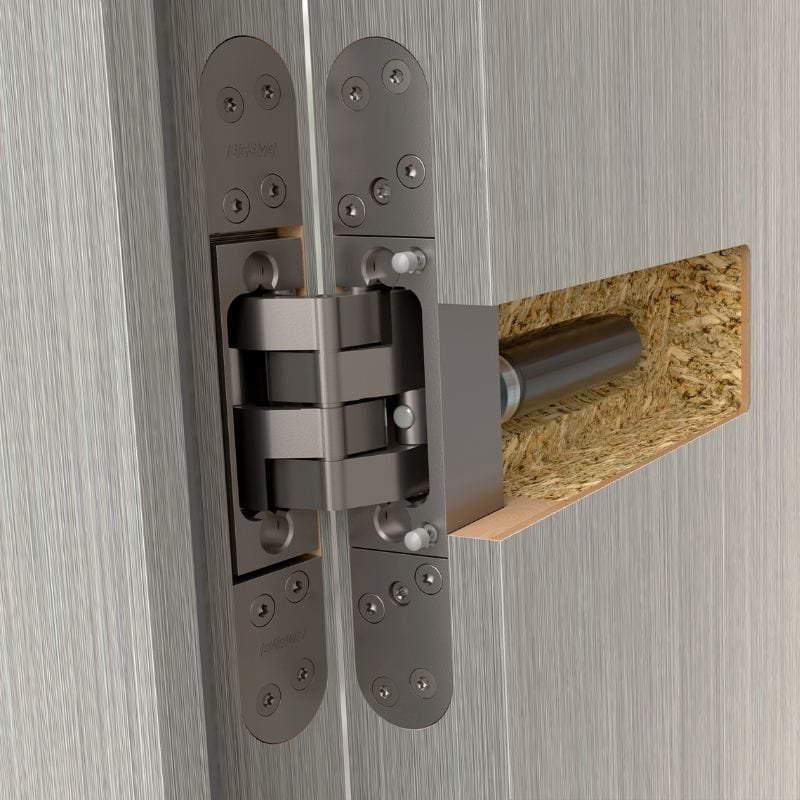
Maintenance and Care
Tips for Maintaining Concealed Door Hinges
- Regularly lubricate the hinge components to ensure smooth movement.
- Check for any loose screws and tighten them as needed.
- Clean the hinges periodically to prevent dust and debris buildup.
Common Issues and Troubleshooting
- If the door sags, adjust the hinge to realign the door.
- Squeaky hinges can be resolved by applying lubricant to the moving parts.
Future Trends in Concealed Door Hinges
Future trends in concealed door hinges may involve increased integration of smart and automated features, a focus on sustainable materials and manufacturing, and enhanced customization options to align with evolving design preferences. As technology advances, these hinges might offer remote control and sensor-based functionalities. The industry may also see a rise in eco-friendly materials and more tailored solutions to meet the demands of modern architectural and interior design.
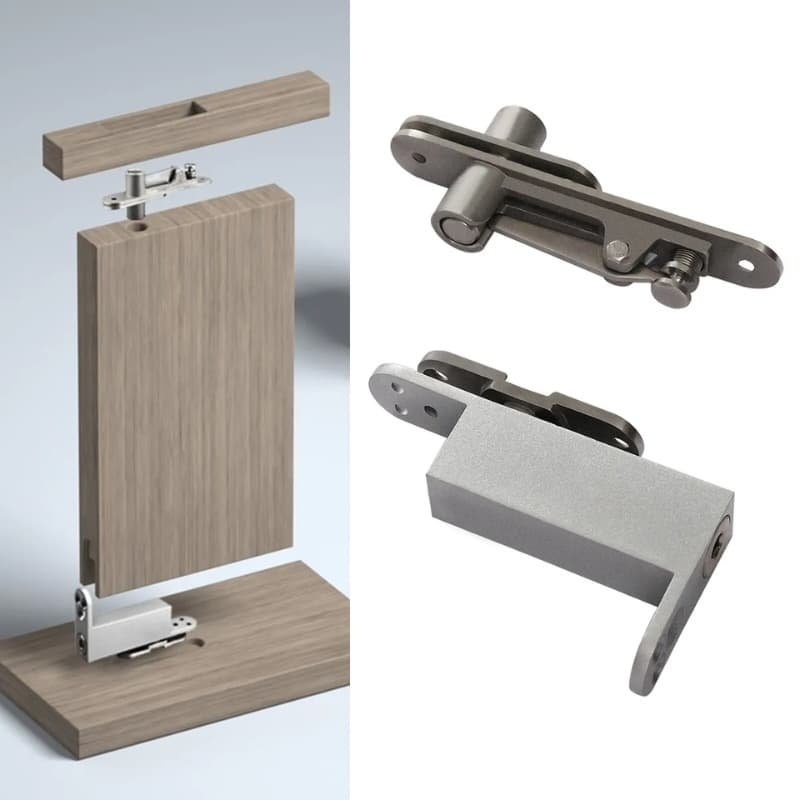
How to Custom Concealed Door Hinges
To custom order concealed door hinges online, research reputable manufacturers and contact them with clear specifications for dimensions, materials, finishes, and desired features. Collaborate closely with the manufacturer to discuss design options and confirm customization capabilities. If possible, request samples or prototypes for evaluation. Obtain a written agreement detailing specifications, pricing, and terms before placing the order. Maintain open communication throughout production, and upon delivery, thoroughly inspect the hinges to ensure they meet the agreed-upon specifications. This streamlined process ensures a smooth and customized experience when ordering concealed door hinges from an online manufacturer.
Conclusion
Concealed door hinges are more than just functional hardware; they are a statement of style and innovation in the world of home design. From their sleek appearance to the added security features, these hinges offer a myriad of benefits. Whether you’re considering a simple home improvement project or a complete renovation, concealed door hinges are a small investment that can yield significant aesthetic and functional returns.
Now that you’re equipped with insights into the types, advantages, installation process, and maintenance tips, it’s time to embark on a journey of transforming your living spaces. Explore the diverse world of concealed door hinges and discover how this seemingly small change can make a big impact.


